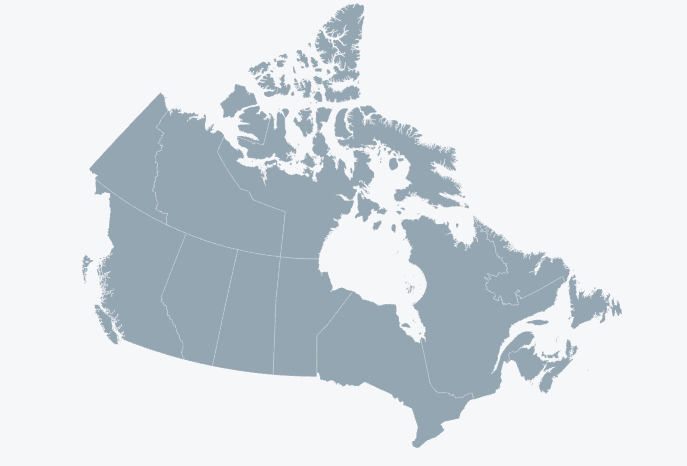Canada's population surpasses 41 million
Canada’s population surpassed 41 million people in the first quarter of 2024, to reach 41,012,563 on April 1, 2024 according to Statistics Canada.
This milestone was reached less than one year after Statistics Canada announced that the population hit the 40 million mark, on June 16, 2023.
The population grew by 242,673 people during the first quarter of 2024, which corresponds to a quarterly increase of 0.6%. This growth rate is the same as that seen in the fourth quarter of 2023 (+0.6%), as well as in the first quarter of 2023 (+0.6%).
Following recent trends, almost all the population growth in Canada (99.3%, or 240,955 people) in the first quarter of 2024 was attributable to international migration (including both permanent and temporary immigration).
For permanent immigration, this growth is consistent with the Immigration, Refugees and Citizenship Canada (IRCC) target for immigrants in 2024.
For temporary immigration, most of this growth occurred prior to the announcement that caps would be placed on the number of permits issued to non-permanent residents (NPRs) in 2024.
Without temporary immigration, Canada’s population growth rate during the first quarter of 2024 would have been 0.3%. From 2001 to 2021, the first quarter growth rate in Canada ranged from 0.1% to 0.3%.
Strong growth from permanent immigration continues
In almost every quarter since the third quarter of 2021, Canada has welcomed more than 100,000 immigrants per quarter—including 121,758 people in the first quarter of 2024.
In the first quarter of 2024, the Maritime provinces of Nova Scotia (+3,999), New Brunswick (+3,999) and Prince Edward Island (+1,330) each welcomed their highest number of immigrants in any quarter since comparable data became available in the third quarter of 1971. The increase in permanent immigration to the Maritimes is mainly in response to the growing need for skilled workers.
Temporary immigration remains hight, but may show signs of slowing
Canada added 131,810 NPRs to the population in the first quarter of 2024. This is higher than the increase observed in the first quarter of 2023 (+108,435). However, the net increase in the first quarter of 2024 was one of the lowest quarterly net increases since higher levels of temporary migration began in the second quarter of 2022. It is also lower than the record highs seen in the second (+233,361) and third (+312,758) quarters of 2023.
All provinces and territories saw an increase in the estimated number of NPRs in the first quarter of 2024, except for Prince Edward Island (-338) and New Brunswick (-218), which had fewer NPRs at the end of the quarter than at the beginning. Yukon had the same estimated number of NPRs at the beginning of the quarter as at the end.
The total number of NPRs living in Canada increased for the ninth quarter in a row to reach a record high of 2,793,594 on April 1, 2024.
Of these NPRs, 2,430,282 were permit holders (work or study) and their family members and 363,312 were asylum claimants, protected persons and related groups (with or without work or study permits).
While the estimated number of people who hold only work permits (+94,299) increased in the first quarter of 2024, the number of people who hold only study permits (-24,594) decreased.
A lower number of people who hold only study permits is not uncommon in a first quarter, but the magnitude of the decrease in the first quarter of 2024 was greater than that in the same quarter of 2023 (-16,003).






















